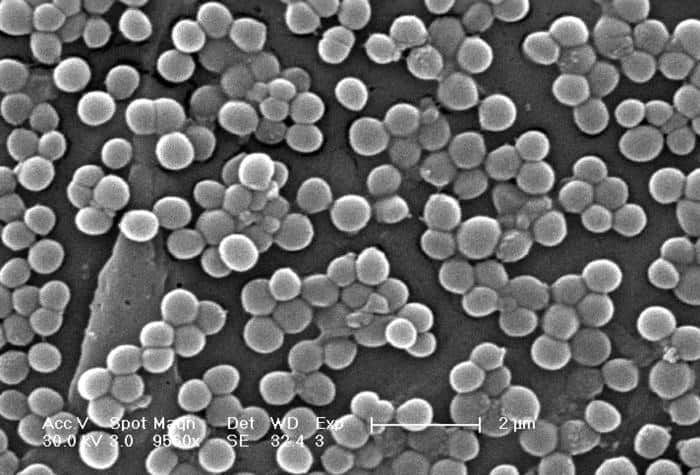
Bear spit could hold the key to beating the antibiotic resistant hospital superbug MRSA, according to new research.
Their saliva contains a chemical that kills potentially deadly Staphylococcus aureus, say scientists.
A state-of-the-art screening technique that scans tiny drops of fluids discovered it in the ‘oral microbiome’ of Siberian brown bears.
It identified the antibiotic Ami (amicoumacin A) which is produced when the animals pick up Bacillus pumilus, a probiotic found in plants.
What is more the study uncovered the mechanism by which the rod-shaped soil microbes combat the molecule.
This may lead to the development of better medications to treat MRSA – methicillin-resistant Staphylococcus aureus.
Professor Alexander Gabibov, of the Russian Academy of Sciences in Moscow, said: “Our technique enabled an efficient and straightforward single-step isolation of bacteria displaying the desirable anti-S. aureus activity from an exotic microbiota source.”
His team said these communities of trillions of bacteria is an “under-estimated” medical resource.
Prof Gabidov said: “The ability of wild animals to thrive while surrounded by aggressive microorganisms may be partially mediated by their microbiota.
“Here we present the analyses of the microbiome collected from East Siberian brown bear (Ursus arctos collaris) obtained immediately after capture in the taiga.”
Brown bears are one of the largest carnivores on Earth – rivaled in size only by polar bears.
The saliva samples mined from an oral cavity were analysed for bacteria that destroyed S. aureus after freezing them with liquid nitrogen.
This isolated a strain of B. pumilus that displayed such activity against S. aureus – thanks to Ami.
Bear saliva is not at all like that of a human’s – and has more to do with the bugs in our poo than our mouth.
Prof Gabidov said: “The composition of bear oral microbiota dramatically differs from human oral microbiota and has much more in common with human faecal microbiota.
“Exploration of uncommon microbiota sources appears to be a promising approach to search for and select both antibiotics and probiotics from wild nature.”
He said the method described in Proceedings of the national Academy of Sciences could shed fresh light on other medical issues – including resistance to chemotherapy.
S. aureus bacteria is carried naturally on the human body, including inside the nostrils.
It once only caused mild skin infections such as boils. But in recent decades some strains have developed resistance to commonly used antibiotics.
These types of strains are known as methicillin-resistant Staphylococcus aureus (MRSA) and can be challenging to treat.
They can also pose a significant threat to people with weakened immune systems.
The World Health Organisation (WHO) has warned superbugs pose an enormous threat to human health.
MRSA is most commonly associated with hospitals.
Current screening methods are fairly inaccurate, which allows the infection to spread as a patient moves around both within and outside hospitals.
Even when the infection is successfully treated, it doubles the average length of a patient’s hospital stay, as well as increasing healthcare costs.
The WHO has classified MRSA as high priority on its list for the Research and Development of new drugs.
Drug-resistant infections kill around 700,000 people worldwide each year – and this figure could increase to ten million by 2050.
Brown bears hunt alone except during seasonal spectacles such as salmon spawning which causes large numbers to gather together.
As well as fish, these fearsome predators can bring down moose, elk and even black bears. They can even eat a human if hungry enough.
Brown bears spend nearly half their lives underground in a state of hibernation.
Females even give birth and nurse a litter underground during the winter months. They lose a staggering 40 per cent of their body weight in the process.
https://www.thelondoneconomic.com/lifestyle/move-over-oranges-this-fruit-has-sixty-times-more-vitamin-c/02/09/